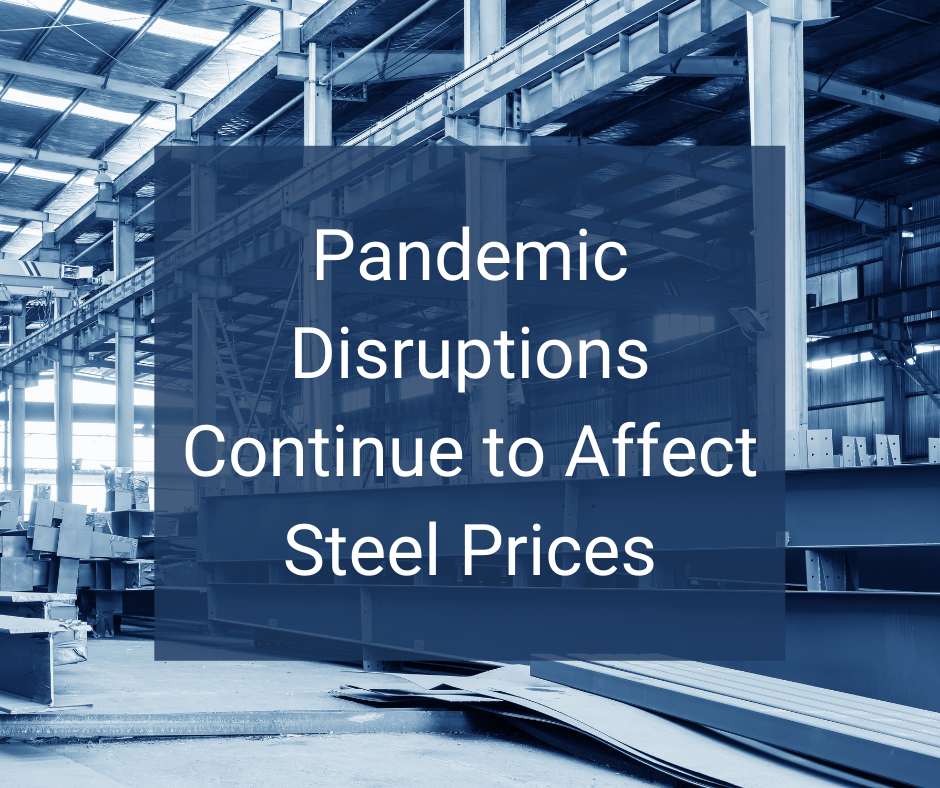Since the onset of the pandemic, shortages of everything from pallets to computer chips have become part of the new normal across the globe. Production of a wide variety of products was halted or slowed by shutdowns and health regulations. Even as COVID-19 restrictions ease in many areas, the residual effects are continuing to create problems.
Material shortages are being exacerbated by everything from government policies to labor challenges to the realities of changing demand. Today, we’ll be exploring how these challenges relate to the market for steel.
Prior to the pandemic, manufacturing production was strong and demand was high. Steel and the raw materials required to make it were being produced quickly to keep up with that demand. Raw material prices were low, imports from China and other countries were plentiful and steel supplies were in surplus, which led to stable steel prices.
“Then COVID-19 hit, and production of raw steel came to a crashing halt around the world,” said James Bender, product manager at Millwood. “Additionally, markets like the automobile industry, which is a large consumer of steel, were shuttered.”
At the same time, consumer demand was rising. People who now had a surplus of time and money started purchasing things like boats, campers, recreational vehicles and bicycles to use for recreational activities since they couldn’t travel or take vacations. This increased demand, and lack of incoming raw materials drove steel prices up astronomically.
As policies changed and shutdowns ended, rising demand for new and used cars caused production to ramp up even more. However, supply issues persisted. Imports slowed significantly as countries struggled to meet their own domestic steel consumption needs and tariff costs remain high.
In the United States, workers in manufacturing and transportation remained hesitant to return to work with COVID-19 still circulating and government aid providing a financial cushion. Businesses now forced to pay higher wages started passing those costs on to customers in the form of higher prices. Inflation has also played a part in driving prices up for all goods and increasing interest rates.
“These economic systems are just as delicate as ecological ones,” Bender said. “One major change to any part affects the rest of the system.”
Is there an end in sight? Eventually, but there’s no telling exactly when. Some experts say the high prices will persist well into 2022. Steel is just one of many commodities that saw an increase in prices during the pandemic; other industries, such as lumber, are beginning to level out. As consumption stabilizes and steel supply is able to catch up to demand, the prices will reflect those changes.
“One thing is certain, there will be a correction at some point,” Bender said.
As a seller of packaging systems and parts, Millwood will continue to monitor the steel market for any changes.






